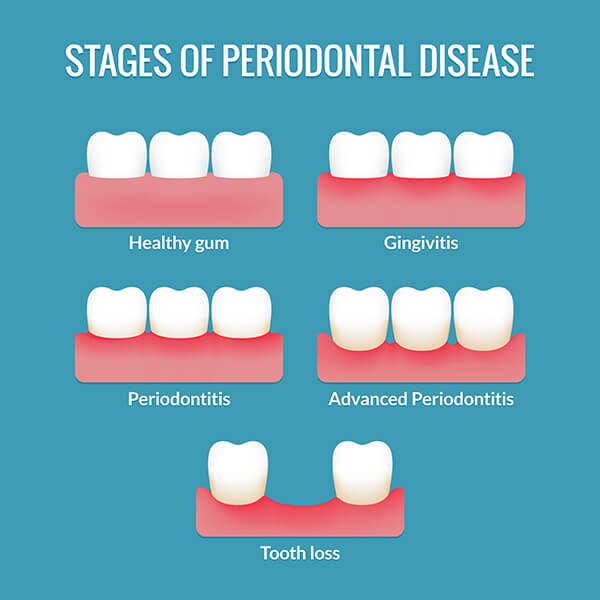Gum disease accounts for approximately 70% of all tooth loss in adults. Early signs of gum disease include bleeding gums when flossing or brushing and gums that are red, inflamed, or swollen. Pain is rarely a sign of periodontal disease until it is a serious and advanced problem.

Gum disease and tooth decay are caused by the same bacteria. These bacteria form plaque beneath the gum-line, which eats away at the bond between tooth and gum. If deterioration is allowed to continue, “pockets” form in between the teeth and the gums. Pockets deeper than 3ml may require special treatment to remove the bacteria and plaque. Without treatment and continuous maintenance, gum disease will eventually weaken the bonds that hold the teeth in place.
There is no permanent “fix” for gum disease. However, it can be kept under control with proper personal hygiene and regular visits to a trained dentist or hygienist.
